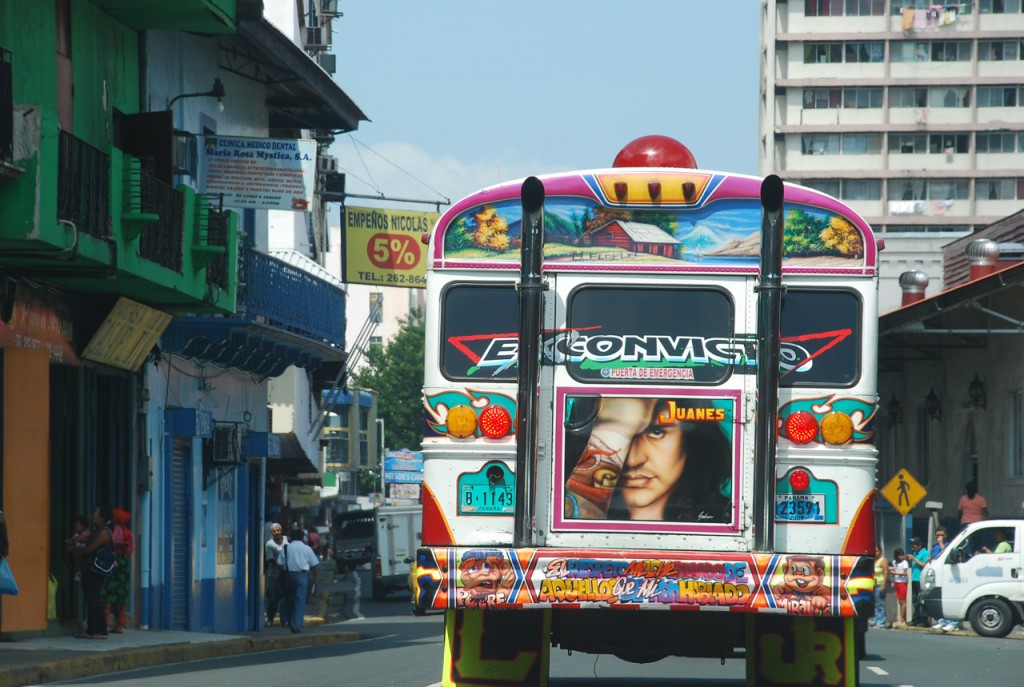
A colorful bus travels down the street in Panama City.
Photo by DoctorWho licensed Creative Commons Attribution No-Derivatives.
Democracy and prosperity haven’t squeezed all the intrigue out of this intriguing country, which has been the plaything of empires for half a millennium. To its boosters, Panama is still “the crossroads of the world”; to jaded locals, “a racket with a flag.” To a Panamanian poet, it’s the “heart of the universe”; to a spy novelist, “Casablanca without heroes.” But there’s one thing nobody calls it: boring.
Panama City alone can keep travelers plenty busy. It is by far the most sophisticated and vibrant city in Central America. You can literally see it grow: As I write this, nearly 200 new high-rise buildings are going up in Panama City.
The natural wonders of Panama are just as overwhelming. A quarter of the country is protected wilderness, much of which has never seen a road. Even in Panama’s busiest towns, the tropical night air vibrates with the calls of a thousand frogs, and you wake to the songs of hundreds of brilliant birds. Where else can you find a national park so close to the capital you can pop over to watch wild kinkajous, capybaras, and coatimundis, then be back in time for lunch at a fancy French restaurant?
There’s always something new to learn about a country with more biodiversity per square meter than the Amazon, not to mention a diverse mix of indigenous people and immigrants. Panama attracts adventurers and misfits, entrepreneurs and schemers, dreamers and full-on nutcases. If you don’t encounter a colorful character during your stay, you aren’t getting out enough.
And then there’s that famous canal, which is in the middle of a multi-billion-dollar expansion program that should make it as much an engineering marvel for the 21st century as it was of the 20th.
There’s an old saying that visitors who drink water from the Chagres, the powerful river that feeds the canal, are bound to return. Two things to remember: 1) The Chagres is Panama’s primary source of drinking water, and 2) in Panama, it’s safe to drink the water.
Excerpted from the Fourth Edition of Moon Panama.